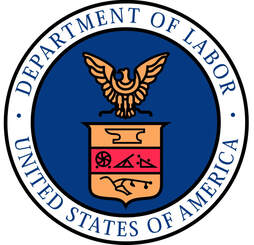- Membership Resources
- State Chapters
- Education/Events
-
Advocacy/Policy
- Home Care Workforce Crisis: An Industry Report and Call to Action
- Advocacy Fund
- State of Home Care: Industry at Crossroads
- Home Care Workforce Action Alliance
- Caring for Seniors: Value of Home Care
- Home Care by the Numbers
- Issues & Positions
- Legislative Action Network
- State Legislation Tracker
- Federal Legislation Tracker
- 2024 National Advocacy Day
- About HCAOA
- Find a Job
 As we reported last week, the U.S. Department of Labor (DOL) published its final rule on employee or independent contractor classification under the Fair Labor Standards Act (FLSA) on Jan. 10, 2024. This final rule revises the Department’s guidance on how to analyze who is an employee versus who is an independent contractor, and its release has been anticipated for some time. It is scheduled to go into effect on March 11, 2024. Specifically, the final rule rescinds the 2021 Independent Contractor Rule that was published on January 7, 2021 and replaces it with a six-factor test to analyze employee or independent contractor classification. The rule states that a worker is not an independent contractor if they are, as matter of “economic reality,” economically dependent on an employer for work and applies the following six factors to analyze employee or independent contractor status under the FLSA:
(1) opportunity for profit or loss depending on managerial skill; (2) investments by the worker and the potential employer; (3) degree of permanence of the work relationship; (4) nature and degree of control; (5) extent to which the work performed is an integral part of the potential employer’s business; and (6) skill and initiative. The final rule goes on to provide detailed guidance regarding the application of each of these six factors. Under the six part “economic reality test” mentioned above, no single factor (or set of factors) automatically determines a worker’s status as either an employee or an independent contractor. Instead, the economic reality factors are all weighed to assess whether a worker is economically dependent on a potential employer for work, according to the totality of the circumstances. It is important to note that this rule only revises the DOL’s interpretation under the FLSA. It has no effect on other laws—federal, state, or local—that use different standards for employee classification. For example, the Internal Revenue Code and the National Labor Relations Act have different statutory language and judicial precedent governing the distinction between employees and independent contractors, and those laws are interpreted and enforced by different federal agencies. Similarly, this rule has no effect on those state wage-and-hour laws which use an “ABC” test, such as California or New Jersey. The FLSA does not preempt any other laws that protect workers, so businesses must comply with all federal, state, and local laws that apply and ensure that they are meeting whichever standard provides workers with the greatest protection. DOL has issued an FAQ on this new rule, which can be read here. You may read the final rule here and the DOL’s press release on this topic here. For questions about the employment classification of a particular worker or group of workers, DOL asks that you contact your nearest WHD District Office, which can be found by clicking here.
0 Comments
Leave a Reply. |
Archives
July 2024
Categories
All
Upcoming Events |
|
Phone: 202-519-2960 | 444 N. Capitol Street NW, Suite 428 | Washington, DC 20001
[email protected] | sitemap © 2024 Home Care Association of America. All Rights Reserved. | Privacy Policy | Refund Policy |
|

 RSS Feed
RSS Feed
